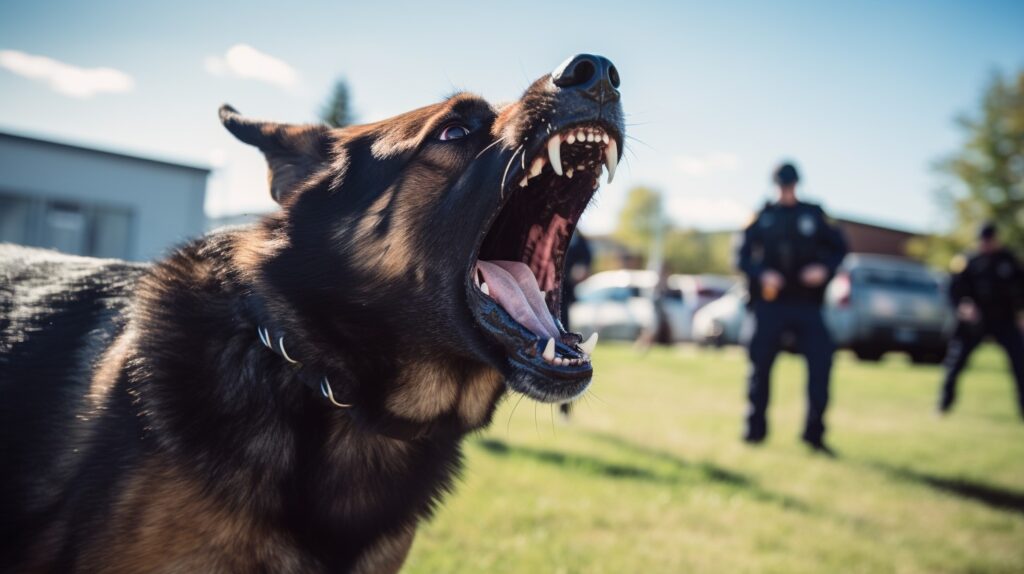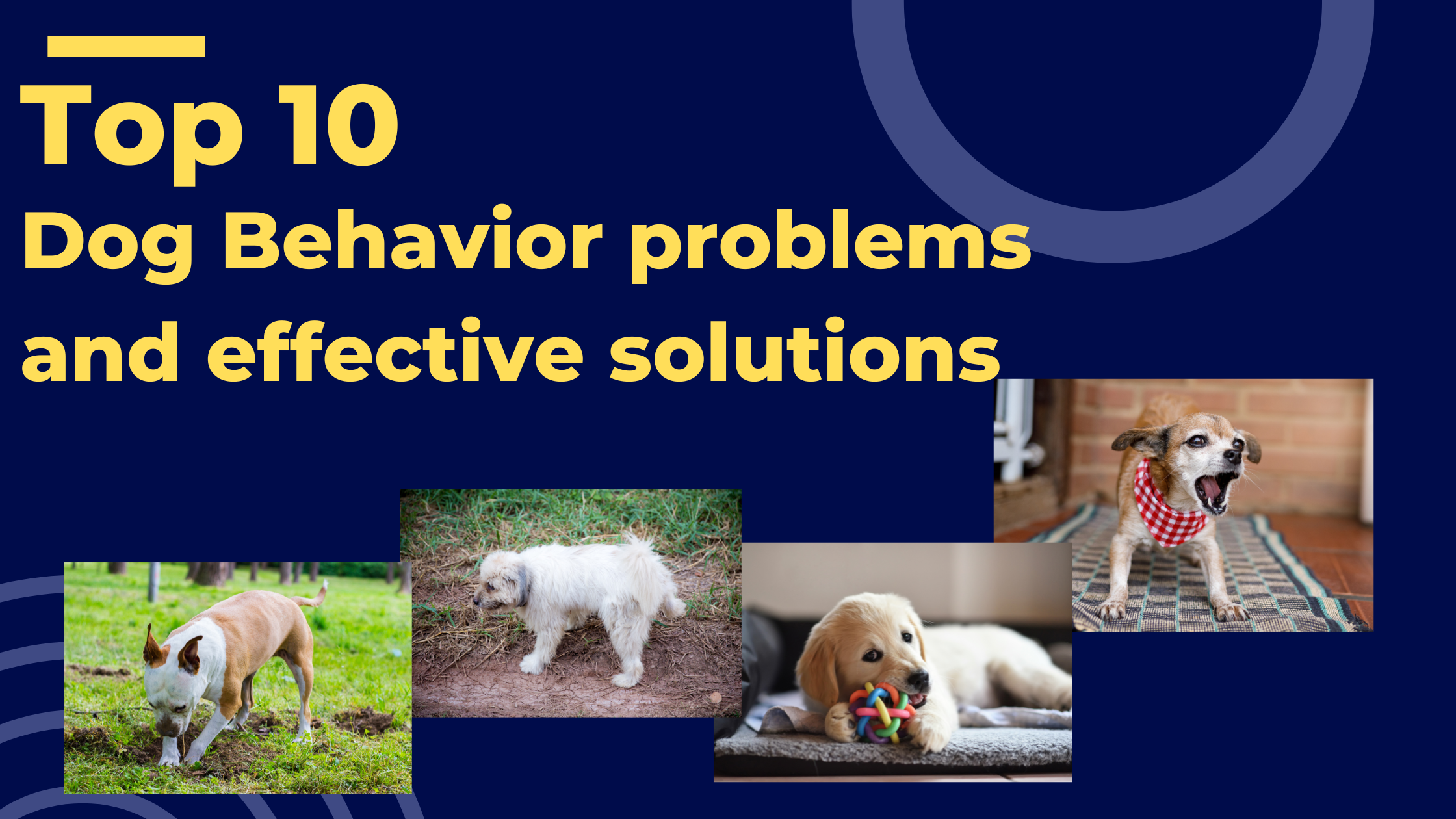Most dog behavior problems occur when dogs are eitherr mishandled by owners. Whether you are new to dogs, intend to acquire a dog, or trying to help your dog get better with a specific challenge, understanding typical dog behavior problems is one way to work on solutions and misunderstood to prevent them. Many behavioral issues in dogs can be dealt with effectively with obedience training.
1. Barking
Dogs are vocal animals, expressing their needs through behavioral expressions like barking, howling, whining, etc. Among many issues, one of the most common behavior problems clients complain about is excessive barking. To fix this, you need first to determine why your dog is barking:
- Warning or alert
- Playful and enthusiastic
- Attention-seeking
- Anxious
- Boredom
- Replying to other dogs
Teach the dog to bark and quiet commands; be consistent and patient. Find out why the dog is barking, remember that dedication and attention to detail, and always remember go a long way toward reducing excessive barking.

2. Chewing
Chewing is a natural behavior for dogs. Therefore, it is necessary to provide an outlet for this behavior. Chewing on furniture is one of the common problems with dogs. Chewing can be a problem
- puppies especially when the adult tooth erupting
- active dog feeling bored
- Restlessness
- Curiosity, especially in puppies
We could do a few things, such as giving the dog plenty of appropriate chew toys, keeping personal items put away, and crating or confining the dog when you are not at home. If you catch the dog inappropriately chewing, redirect it to an appropriate, allowed chew toy. Always make sure you exercise the dog plenty to use that pent-up energy.
3. Digging
Many dogs dig because of instinct, and certain breeds, like terriers, are more prone to digging because of their hunting histories. Some reasons why dogs dig:

- Active dog with Boredom
- when dog is afraid of something
- anxious dog
- hunting behaviour
- Hiding things
- Egress or entry into an area
Removal of the reason that incites the dog to dig can prevent the problem from reoccurring. Also, give more exercise, spend quality time together, and provide additional training. If the digging can’t be avoided, make a place in your yard for him, like a sandbox.
4. Separation Anxiety
Separation anxiety is the most common behavior problem and manifests itself through vocalization, chewing, inappropriate urination, defecation, or any other destructive behavior when a dog is separated from its owner. Actual separation anxiety includes:
- Behaviors related to anxiety associated with the preparation of the owner for departure
- Destructive activity in a span of 15-45 minutes in the owner’s absence
- Always following the owner
- Always wanting to be around the owner
Separation anxiety may be addressed with training that is catered to the condition alongside exercises in behavior modification or desensitization. Medication should be considered in extreme cases.
5. Inconsistent Elimination
Inappropriate urination and defecation destroy homes, ruin furniture and carpets, and make the dogs unwelcome in public areas. First, see your veterinarian to rule out a health problem. If no problem is found, consider reasons such as
- Submissive/ex
- Scent marking
- anxious dog
- Inappropriate house training
Older dogs often need much more intense behavior modification to rid them of this behavior. Most mature dogs can be trained to signal the owner when they need to urinate and defecate with consistent training.
6. Begging
Dog owners often unconsciously reinforce begging, which can lead to disorders in the digestive system and obesity. To eliminate begging:
Make sure your dog goes to their place before you eat.
- If necessary, leave your dog in another room
- Treat them to a special snack when you finish eating, provided that they are well-behaved
7. Chasing
Chasing is a natural predatory instinct in dogs, and therefore it could be dangerous. For prevention of chasing:
- Pin our dog or keep him on a leash
- ‘ Train your dog to do Recall
- A dog whistle or noisemaker, for getting your dog’s attention
- Be watchful for things that could potentially be triggers
Consistent training can control this behavior by teaching your dog to pay attention to you before taking off.
8. Jumping Up
While jumping up is a natural behavior in dogs, it can be annoying and dangerous. It’s important to note that ignoring the dog and, if necessary, walking away is the best way of stopping a jumping dog. Without maintaining eye contact, speaking, or touching the dog—just wait until he calms down and then reward.

9. Biting
Dogs bite for many reasons, which may include fear, defense of property, pain or illness, and predatory inclinations. These biting inclinations can be reduced through proper socialization and training practices during breeding. If your dog shows aggressive tendencies, contact your veterinarian and consider seeking help from appropriately qualified behaviorists or dog trainers.
10. Aggression
The aggression can be shown through the baring teeth, lunges, bites, and growls. Although all dogs may have this potential, some are more predisposed to the act; these include the previously abused ones or those that had been bred with hostility in mind. Dog aggression: the same drives that move them to bite also force them to be aggressive. You should get professional help if your dog shows tendencies toward aggressive behavior. In the long run, this can become a considerable danger to you or others. Being vigilant with these all-too-common behavioral issues and treating them with training, patience, and consistency can help you curb the growth of a happier and more positive relationship with your dog.
Reference
- Yamada, R., Kuze-Arata, S., Kiyokawa, Y., & Takeuchi, Y. (2019). Prevalence of 25 canine behavioral problems and relevant factors of each behavior in Japan. Journal of veterinary medical science, 81(8), 1090-1096
- Hecht, J., & Horowitz, A. (2015). Introduction to dog behavior. Animal behavior for shelter veterinarians and staff, 3-30.
- Roth, L. S., & Jensen, P. (2015). Assessing companion dog behavior in a social setting. Journal of Veterinary Behavior, 10(4), 315-323.
.





